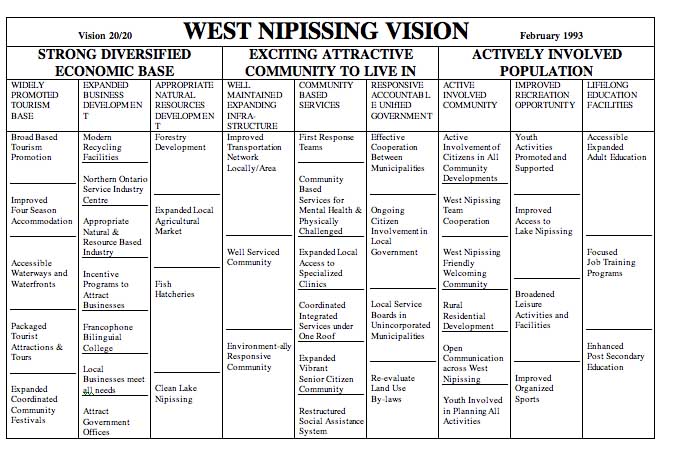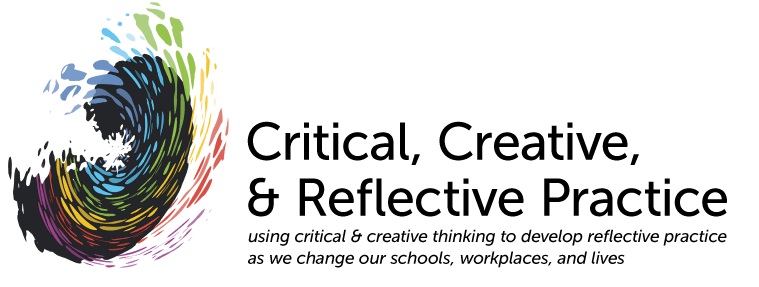Strategic Participatory Planning
Strategic Participatory Planning can take many forms, but the form presented here is the workshop process developed by the Institute for Cultural Affairs (ICA). The basic propositions of the ICA workshop process include:
- Notwithstanding any initial impressions to the contrary, everyone has insight (wisdom) and we need everyone's insight for the wisest result.
- There is insight in every response. (There are no wrong answers.)
- We know more than we are, at first, prepared or able to acknowledge.
- When a person is heard, they can better hear others and hear themselves. This causes us to examine decisions made in advance about what the other people are like, what they are and are not capable of.
- The step-by-step workshop process thus aims to keep us listening actively to each other, foster mutual respect, and elicit more of our insight.
- Your initial conclusions may change -- be open for surprises.
- What we come out with is very likely to be larger and more durable than what any one person came in with; the more so, the more voices that are brought out by the process.
- In particular, we will be engaged in carrying out/carrying on the plans we develop.
- In sum, the workshop process aims for the "greatest input, with greatest commitment and the least confusion, in the least time."
This page will not provide a "how-to" on Strategic Participatory Planning, but merely quote from Taylor (2005, 207-210) to capture its flavor and virtues, leaving it for readers to follow up with reading (see reading and training:
ICA's techniques have been developed through several decades of "facilitating a culture of participation" in community and institutional development. Their work anticipated and now exemplifies the post-Cold War emphasis on a vigorous civil society, that is, of institutions between the individual and, on one hand, the state and, on the other hand, the large corporation (Burbidge 1997). ICA planning workshops involve a neutral facilitator leading participants through four phases—practical vision, underlying obstacles, strategic directions, and action plans (Stanfield 2002). These mirror and make use of the "objective, reflective, interpretive, decisional" steps of shorter ICA "focused conversations" (Stanfield 1997). The goal of ICA workshops is to elicit participation in a way that brings insights to the surface and ensures the full range of participants are invested in collaborating to bring the resulting plans or actions to fruition [see principles above and Stanfield 2002, especially his chart of old and new styles of social relations, p. xviii].
Such investment was evident, for example, after a community-wide planning process in the West Nipissing region of Ontario, 300 kilometers north of Toronto. In 1992, when the regional Economic Development Corporation (EDC) enlisted ICA to facilitate the process, industry closings had increased the traditionally high unemployment to crisis levels. As well as desiring specific plans, the EDC sought significant involvement of community residents. Twenty meetings with over 400 participants moved through the first three phases—vision, obstacles, and directions. The results were synthesized by a steering committee into common statements of the vision (see figure below), challenges, and strategic directions. A day-long workshop attended by 150 community residents was then held to identify specific projects and action plans, and to engage various groups in carrying out projects relevant to them.

The vision for West Nipissing region in Canada produced by a community-wide planning process in 1992 (from West Nipissing Economic Development Corporation 1993)
A follow-up evaluation five years later found that they could not simply check off plans that had been realized. The initial projects had spawned many others; indeed, the EDC had been able to shift from the role of initiating projects to that of supporting them. It made more sense, therefore, to assemble the accomplishments under the headings of the original vision and strategy documents. Over 150 specific developments were cited, which demonstrated a stronger and more diversified economic base, and a diminished dependence on provincial and national government social welfare programs. Equally importantly, the community now saw itself as responsible for these initiatives and developments, eclipsing the initial catalytic role of the EDC-ICA planning process. Still, the EDC appreciated the importance of that process and initiated a new round of facilitated community planning in 1999 (West Nipissing Economic Development Corporation 1993, 1999).
References
Burbidge, J. (Ed.) (1997). Beyond Prince and Merchant: Citizen Participation and the Rise of Civil Society. New York: Pact Publications.Spencer, L. J. (1989). Winning Through Participation. Dubuque, Iowa: Kendall/Hunt.
Stanfield, B. (Ed.) (1997). The Art of Focused Conversation. Toronto: Canadian Institute of Cultural Affairs.
------ (2002) The Workshop Book: From Individual Creativity to Group Action. Toronto, Canadian Institute of Cultural Affairs. (See useful excerpts on googlebooks.)
Taylor, P. (2005). Unruly Complexity: Ecology, Interpretation, Engagement. Chicago: University of Chicago Press.
West Nipissing Economic Development Corporation (1993). "Vision 20/20: Shaping our futures together, Executive Summary." (April 1993).
------ (1999). "Vision 2000 Plus, Executive Summary." (June 1999).
